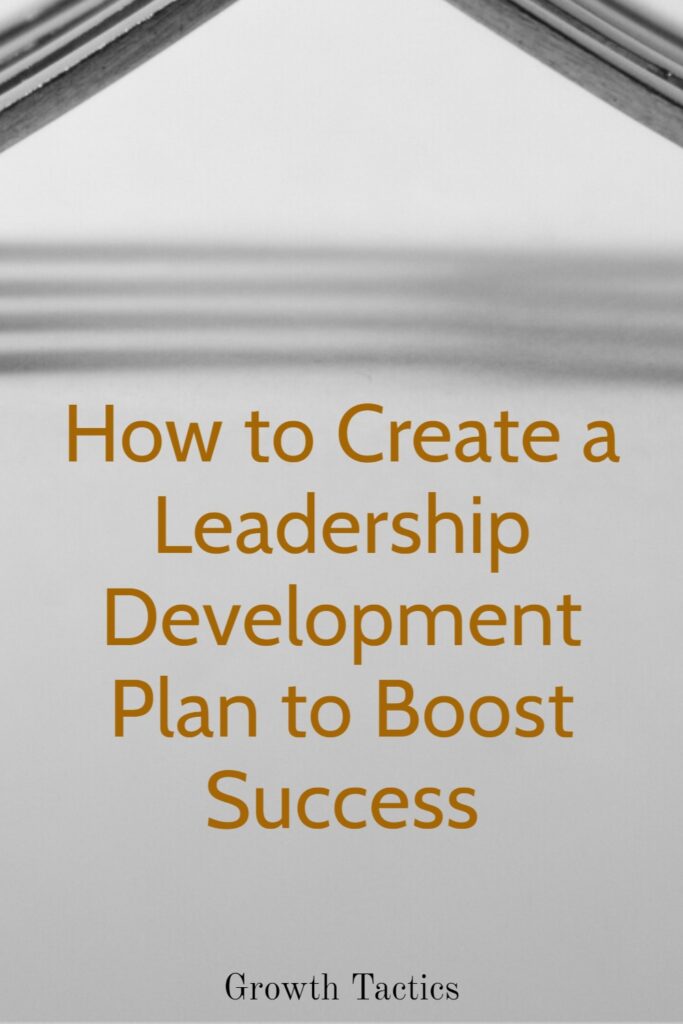There are many ways to develop leadership skills but you need a plan. That’s where leadership development planning or LDP comes into play.
An LDP is a written plan that outlines your goals and objectives as a leader and helps you achieve them by making decisions about how you will spend your time, energy, and money.
Jump To Section
What is a Leadership Development Plan?

A Leadership Development Plan is a roadmap for your leadership learning and growth. It’s about improving your skills, growing in your role, and achieving your career aspirations.
The LDP should be customized to you based on what you want to get out of it. Whether that’s more confidence as a leader or becoming more strategic, and what you feel will help you achieve those goals. Think about the kind of person you want to become as a leader and create an action plan accordingly.
Key Steps in Leadership Development Planning
Step 1: Self-Assessment
Before embarking on any development journey, it is important to have a clear understanding of our strengths and weaknesses as leaders. Take some time to reflect on your current abilities and identify areas that you would like to improve. Are you a good communicator but struggle with delegation? Do you excel in strategic thinking but need to work on your interpersonal skills? Once you have identified these areas, you can begin to focus on developing those specific skills.
Step 2: Set Clear Goals
Setting clear and specific goals is essential to leadership development planning. Start by defining both short-term and long-term goals that align with your vision of leadership success. Make sure your goals are SMART—specific, measurable, attainable, relevant, and time-bound. For example, instead of setting a goal like “improve communication skills,” consider setting a goal like “participate in a presentation skills workshop within the next three months to enhance my public speaking abilities.”
Step 3: Identify Development Opportunities
There are numerous avenues for leadership development, both within your organization and outside of it. Look for opportunities within your workplace, such as mentoring programs, stretch assignments, or leadership workshops. Seek out external resources as well, such as books, podcasts, seminars, or conferences. Keep in mind that development can happen in various forms, so don’t limit yourself to traditional methods. Joining professional associations, volunteering for leadership roles in community organizations, or participating in online courses are all great ways to enhance your skills.
Step 4: Create a Development Plan
Once you have identified the areas for development and the opportunities available to you, it’s time to create a development plan. This plan should outline the actionable steps you will take to achieve your leadership goals. Start by prioritizing your development activities based on their importance and feasibility. Break down each activity into smaller, manageable tasks and set a timeline for completion. The key is to be detailed and specific, as this will help you stay focused and motivated throughout the process.
Step 5: Implement and Execute the Plan
With your development plan in hand, it’s time to put it into action. Begin by taking the necessary steps to seize the identified development opportunities. Whether it’s attending a workshop, taking on a challenging project, or seeking feedback from mentors, make sure to follow through with your plan. Stay accountable and disciplined in executing your plan, even when faced with obstacles or distractions. Remember, consistent action is the key to growth and progress.
Step 6: Evaluate Progress and Adjust
Regularly evaluate your progress towards your leadership goals and make necessary adjustments along the way. Reflect on the skills you have developed, the challenges you have overcome, and the feedback you have received. Celebrate your successes and acknowledge areas where further improvement is needed. This ongoing evaluation will help you stay on track and continually refine your development plan.
Step 7: Celebrate Success and Continue Growing
As you achieve milestones and reach your leadership goals, take the time to celebrate your successes. Acknowledge the hard work and dedication that went into your development journey. However, remember that leadership development is a lifelong process. Set new leadership goals and continue to seek growth opportunities. Stay curious, be open to feedback, and embrace continuous learning as you shape yourself into an exceptional leader.

Explore your current state of leadership skills
As you are assessing the state of your leadership skills, it’s important to look at areas where you may be lacking. This is referred to as “gap analysis.”
- Identify what’s working well and what isn’t. You can take an honest assessment of your strengths and weaknesses by looking back on past experiences, asking for feedback from others (including direct reports), or completing a leadership assessment.
- Determine how you want to grow as a leader now and in the future. Do you want to improve specific skills? Are there certain areas where more training would help? Think about how this relates to your organization’s vision and strategy; what does it mean for leadership development at your organization?
Once you have mapped out where things stand today with regard to leadership development, consider where they could go in the future.
See Related: 12 Top Leadership Qualities for Great Leaders
Determine your leadership gaps

The first step to creating a leadership development plan is identifying the gaps in your current leadership skills. It’s important to take an honest look at yourself and determine what specific areas need improvement.
You may have already identified some of these gaps, but if you haven’t, ask people who work with you or know your strengths and weaknesses what they think are some of your biggest flaws as a leader. Listen carefully to their feedback. It can be eye-opening!
Develop a plan to address your gaps
Your first step is to identify the areas you need to improve. In some cases, you may already know what these are because someone has pointed them out or you’ve been given feedback by your peers or manager. Other times, they might be things that you realize only after taking a step back and reflecting on how your performance compares with others in similar roles at your company.
In either case, take note of areas where you want to make progress; then prioritize them based on how important they are for advancing your career (e.g., being able to work independently would be more important than being able to manage people). This will help guide your efforts as you develop a plan for leadership development over time, and give clarity about which skills will have the biggest impact on what success looks like for you personally.
Once this list has been prioritized in order of importance across all three categories (technical/functional, leadership), it’s time to start thinking about how exactly each item fits into those categories before deciding on the next steps for improvement.
See Related: How to Write SMART Goals (Definition and Examples)
Put yourself in leadership opportunities
- Ask for a leadership role. You’re more likely to get the experience you need if you ask for it rather than waiting around passively.
- Offer to help someone else with their project. If a colleague has a project that needs someone to lead it, offer to step in and take some responsibility!
- Volunteer to take on extra responsibilities. If there’s something in your company or team that needs work done but no one is assigned it, volunteer! This can be especially useful if there are skills gaps or projects that no one knows how to do well yet – consider offering up your services as an opportunity for growth!
- Try new things. Take on responsibilities outside of your typical role so that you learn from different perspectives and areas of focus within the organization (and enjoy some fresh air too!)
- Lead by example. Be honest about the ways in which leadership applies directly through everyday interactions with others at work; this will help others see how important those skills are when leading effectively themselves.”
Track your progress and refine your plan as needed
Once you have created your plan and set goals, don’t just let it sit there. Track your progress and refine your plan as needed.
The best way to do this is by setting regular check-in dates on when you will review your progress against the goals. If things aren’t going as planned, then make changes to the plan and course-correct accordingly. Don’t be afraid of making adjustments!
If everything is going well, then just keep doing what works for now until you feel like making some modifications and increasing difficulty levels in certain areas of leadership development (like speed or accuracy).
See Related: 5 Ways to Track Your Progress (And Why it’s so Important)
Making a leadership development plan is a great way to improve as a leader
Creating a leadership development plan is a great way to improve as a leader. A leadership development plan is an essential tool for building your skills and understanding of the role, as well as for defining your goals and identifying the support you need to succeed.
It’s also a great way to stay on track with your leadership development over time, which will help you achieve those goals by making sure you keep learning, growing, and improving in all areas of leadership.
Did you enjoy this article on what a leadership development plan is? Please share and subscribe below.


